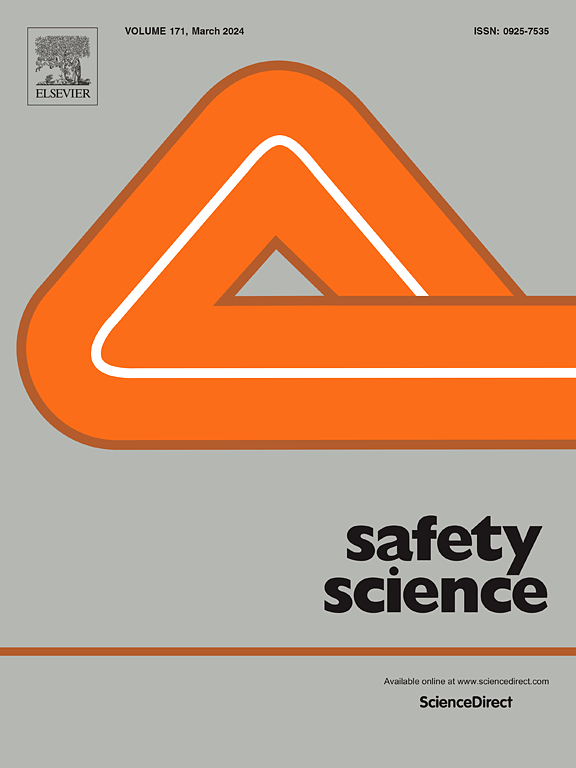From knowledge to action: Assessing the effectiveness of immersive virtual reality training on safety behaviors in confined spaces using the Kirkpatrick model
IF 4.7
1区 工程技术
Q1 ENGINEERING, INDUSTRIAL
引用次数: 0
Abstract
Safety in the industrial sector is paramount, with national legislations establishing specific regulations to reduce accidents. These regulations emphasize risk removal and proper operator training as preventive measures. However, traditional training can be time-consuming and costly, leading companies to meet only the minimum requirements. In particular, confined spaces pose significant dangers, often resulting in fatal, cascading accidents due to a lack of proper safety procedures. Therefore, effective training is crucial to mitigate these risks.
Advanced technologies like Immersive Virtual Reality (IVR) present new opportunities for cost-effective and extensive training campaigns by eliminating the risks associated with real environment training, offering a safe yet realistic experience.
Despite the widespread adoption of IVR training applications in industrial research, there is a notable lack of systematic approaches to evaluate their effectiveness. Conducting such evaluations is crucial to ascertain their impact on essential training outcomes, including participant engagement, knowledge transfer, and enhanced safety behavior during work activities.
To address this gap, we developed an IVR-based training platform for confined space safety procedures and established a systematic validation procedure using the Kirkpatrick model to assess its effectiveness compared to conventional training methods. Results demonstrate that IVR training provides an excellent user experience, better knowledge transfer than the traditional approach, and improved performance in simulated procedures, reducing execution errors and completion times. This dual focus on creating and validating the IVR system underscores its potential as an effective training tool in hazardous environments such as confined spaces, where proper training can prevent tragic fatalities.
从知识到行动:利用柯克帕特里克模型评估沉浸式虚拟现实培训对密闭空间安全行为的影响
工业领域的安全至关重要,国家立法制定了减少事故的具体规定。这些法规强调将消除风险和适当的操作员培训作为预防措施。然而,传统的培训既费时又费钱,导致企业只能满足最低要求。特别是,密闭空间具有很大的危险性,由于缺乏适当的安全程序,往往会导致致命的连环事故。因此,有效的培训对于降低这些风险至关重要。沉浸式虚拟现实(IVR)等先进技术通过消除与真实环境培训相关的风险,提供安全而逼真的体验,为成本效益高的广泛培训活动带来了新的机遇。尽管 IVR 培训应用在工业研究中得到广泛采用,但明显缺乏评估其有效性的系统方法。为了弥补这一不足,我们开发了基于 IVR 的密闭空间安全程序培训平台,并利用柯克帕特里克模型建立了系统的验证程序,以评估其与传统培训方法相比的有效性。结果表明,IVR 培训提供了极佳的用户体验,比传统方法更好地传授了知识,提高了模拟程序的性能,减少了执行错误和完成时间。对 IVR 系统的创建和验证的双重关注强调了其作为危险环境(如密闭空间)中有效培训工具的潜力,在这种环境中,适当的培训可以避免悲剧性的死亡事故。
本文章由计算机程序翻译,如有差异,请以英文原文为准。
求助全文
约1分钟内获得全文
求助全文
来源期刊

Safety Science
管理科学-工程:工业
CiteScore
13.00
自引率
9.80%
发文量
335
审稿时长
53 days
期刊介绍:
Safety Science is multidisciplinary. Its contributors and its audience range from social scientists to engineers. The journal covers the physics and engineering of safety; its social, policy and organizational aspects; the assessment, management and communication of risks; the effectiveness of control and management techniques for safety; standardization, legislation, inspection, insurance, costing aspects, human behavior and safety and the like. Papers addressing the interfaces between technology, people and organizations are especially welcome.
 求助内容:
求助内容: 应助结果提醒方式:
应助结果提醒方式:


